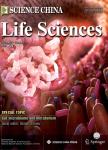A life support-based comprehensive treatment regimen dramatically lowers the in-hospital mortality of patients with fulminant myocarditis: a multiple center study
A life support-based comprehensive treatment regimen dramatically lowers the in-hospital mortality of patients with fulminant myocarditis: a multiple center study作者机构:Division of Cardiology Department of Internal Medicine Tongji Hospital Tongji Medical College Huazhong University of Science and Technology Hubei Key Laboratory of Genetics and Molecular Mechanisms of Cardiological Disorders Emergency Department of Union Hospital Peking Union Medical College Chinese Academy of Medical Sciences Fuwai Hospital National Center for Cardiovascular Diseases Chinese Academy of Medical Sciences Peking Union Medical College Fuwai Huazhong Cardiovascular Hospital
出 版 物:《Science China(Life Sciences)》 (中国科学(生命科学英文版))
年 卷 期:2019年第62卷第3期
页 面:369-380页
核心收录:
学科分类:0710[理学-生物学] 07[理学] 09[农学]
基 金:supported by the National Basic Research Program of China (2012CB518004) the key project of the National Natural Science Foundation of China (81630010, 81790624) National Key Research and Development Program of China (SQ2017YFSF090157)
主 题:fulminant myocarditis in-hospital mortality life support-based comprehensive treatment regimen
摘 要:Fulminant myocarditis(FM) has unacceptable high mortality. This study aimed to evaluate the therapeutic efficacy of a life support-based comprehensive treatment regimen(LSBCTR), a completely novel treatment regimen, for FM. A total of 169 FM patients recruited from January 2008 to December 2018 were divided into two groups: patients receiving LSBCTR(81 cases),which includes(i) mechanical life support(positive pressure respiration, intra-aortic balloon pump with or without extracorporeal membrane oxygenation),(ii) immunomodulation therapy using sufficient doses of glucocorticoids and immunoglobulins, and(iii) application of neuraminidase inhibitors, and those receiving conventional treatment(88 cases). The endpoints were in-hospital death and heart-transplantation. Of all the population, 44 patients(26.0%) died in hospitals. Inhospital mortality was 3.7%(3/81) for LSBCTR group and 46.6%(41/88) for traditional treatment(P0.001). Early application of LSBCTR, mechanical life support, neuraminidase inhibitors, and immunomodulation therapy significantly contributed to reduction in in-hospital mortality. This study describes a novel treatment regimen for FM patients that dramatically reduces inhospital mortality. Its generalization and clinical application will efficiently save lives although further optimization is *** study offers an insight that virus infection induced inflammatory waterfall results in cardiac injury and cardiogenic shock and is the therapeutic target.



